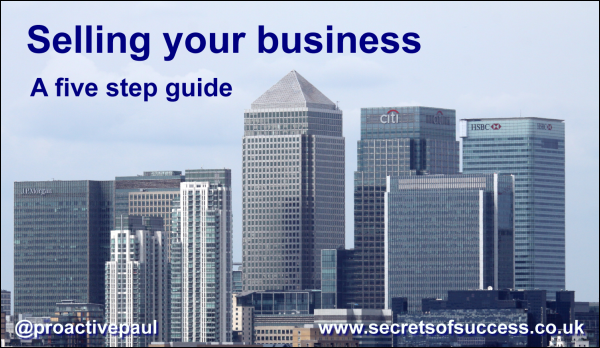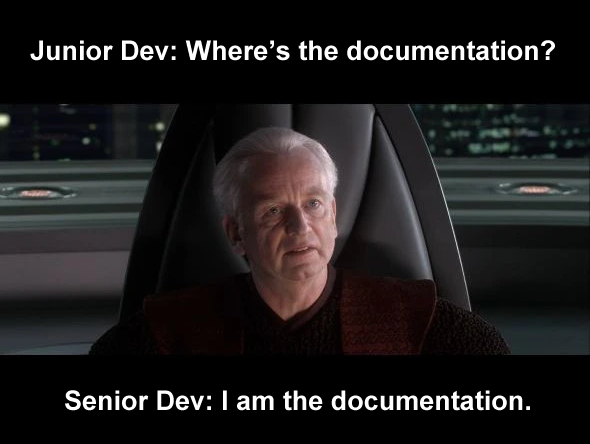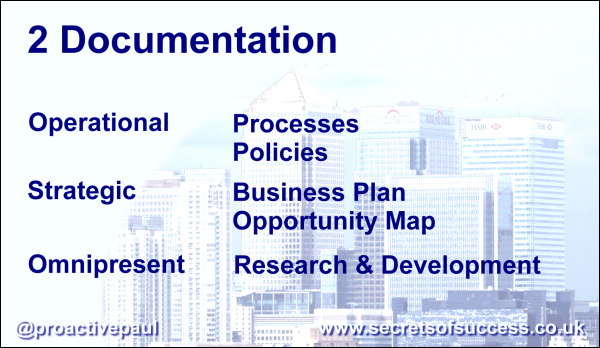I like conferences and unconferences. And, for a while I’ve had a conference idea germinating, a 5 step guide to growing and selling your business.

The combination of TechMids and UKhealthcamp, spanning two consecutive days in October 2022, gave me the chance not only to commit the idea to paper, but also to present it to an audience. The material was half written on the train journey from London to Birmingham, en route to the TechMids conference (where I was a delegate, not a speaker). The other half was written on the return journey that evening.
And it was premiered in London the next morning, at the UKhealthcamp unconference (where I was both a speaker and a delegate). Moreover, because HealthCamp heard it first, it was also written with a deliberate HealthTech flavour. Psychology is a personal interest of mine, and I’ve been going to HealthCamp events since 2008.
I could probably talk non stop for about 4 or 5 days on the subject of growing and selling your business, although I had a mere 45 minutes in which to convey the key points. The audience was lovely, the Accurx venue was faultless, and the presentation ran perfectly to time, even with a good deal of two way dialogue, and I was able to cover all of my material. The talk could also amount to a 30 page academic paper, so this blogpost is limited to the primary message, augmented by my slides, and I would be happy to present the full detail again to your audience.
Documentation is key! In healthcare you need to document everything anyway. Healthcare professionals need the case notes in order to deliver calibre services without going over the same ground twice. In tech circles, software developers need to document what they do in two different ways, once as reference material for the team that will have to maintain the software, and once as a guide for the end user.

Growing a business, and selling a business, requires a substantial amount of documentation too. You can cut corners and get a lesser value, though the better the documentation, the better the price that your buyer might pay.
Let’s assume that you already have a business with substantial value and a valuable substance. Your documentation falls into two broad categories:

Percolating through everything there will be constant references and details about the omnipresent Research & Development work that is done.
Operational docs reside in what is variously called an “Operations Manual” or a “Knowledge Base”. In the old days they were kept on paper in ring binders and to give you some idea of the volume, think of McDonalds in the pre internet era. How many processes and policies does a typical McDonalds outlet have? Each outlet had a set of ring binders containing the full “Operations Manual”, and when they were stacked on top of each other they would stand about one metre high. I have never worked there, but have seen the docs, everything from how to cook a burger, how fries should be served, and how to clean a syrup tank!
Back in 1997, my first business initially prepared an “Operations Manual” in a single 300 page Word doc, with an index and dozens and dozens of hyperlinks. As the business grew (and as the web matured), that morphed into a 900 page “Knowledge Base” on a wiki. Some of those pages are so long that they equate to about 15 pages of paper. The first wiki then morphed into two wikis, one for the senior management team, and one for the operations team. The staff wiki contains all the processes and policies, and this information enables the team to deliver services in a persistent and consistent way. The “Knowledge Base” focusses on the core competencies of any business:
- How do you get an order?
- How do you fulfil an order?
- How do you know when to bill for an order?
The “fulfil” bit is massive, because it covers 23 different products, and some of them have as many as 30 steps in a complex process! There are only 4 core products, but there are many extra ones that clients will legitimately ask for (sometimes), and expect us to be able to deliver.
The Strategic docs are a different animal altogether, and are in the domain of the board, not the full workforce. You need a Business Plan. A Business Plan is the one thing that will make the single biggest difference to your business growth. In the UK, 95% of businesses have no written plan. Hence you can elevate your business into the top 5% simply by writing down your plan!
And for a business that really wants to go somewhere you need an Opportunity Map. Where are the growth opportunities, what do they mean in financial terms, where are you going to find a buyer, how do you satisfy the buyer’s expectations, and what figure can you reasonably expect to secure? An Opportunity Map is in effect a “Forward Price Instrument”, it sets out what your business will be worth two years from now, or three years from now, if everything goes to plan. The Opportunity Map is not the starting point in any negotiation, it might not even be put on the table, although it is a key document in the array of meticulous documentation that will help you get to where you want to be.

What the buyer really wants is scalability, your as yet unrealised scalability, and that should be clearly defined in your Opportunity Map. A buyer does not want to baby sit your half a million pound profit making business, and continue to bring in half a million every year. The buyer wants to leverage your operation and scale it significantly.
The scalability may come from diversification in . . .
- Markets
- Products
- Teams
. . . or any combination of those. For each area I have a case study which I can elaborate on. The slides have screen shots of the relevant web sites.
Getting to this stage is a challenge!
Once the foundations are built you’ll discover that you have to move from “selling your product” to “selling your business” and that requires a different sort of mindset. You will need to build credibility and visibility, and you’ll need to explore the various “exit” routes open to you.
Preparing a business for sale is a multi disciplinary endeavour. It requires a combination of skills rarely found in management scientists and accountants. It requires a bit of creativity in order to pull together all of the facets outlined above.
Steve Jobs sums this up nicely:
Creativity is just connecting things. When you ask creative people how they did something, they feel a little guilty because they didn’t really do it, they just saw something . . .
Unfortunately, creativity is too rare a commodity. A lot of people in our industry haven’t had very diverse experiences.
So they don’t have enough dots to connect, and they end up with very linear solutions without a broad perspective on the problem.
I said to my audience, if you remember nothing else about my presentation, please just remember these words:
- Documentation
- Business Plan
- and most importantly, Opportunity Map
Who else do you know who needs to hear this?

